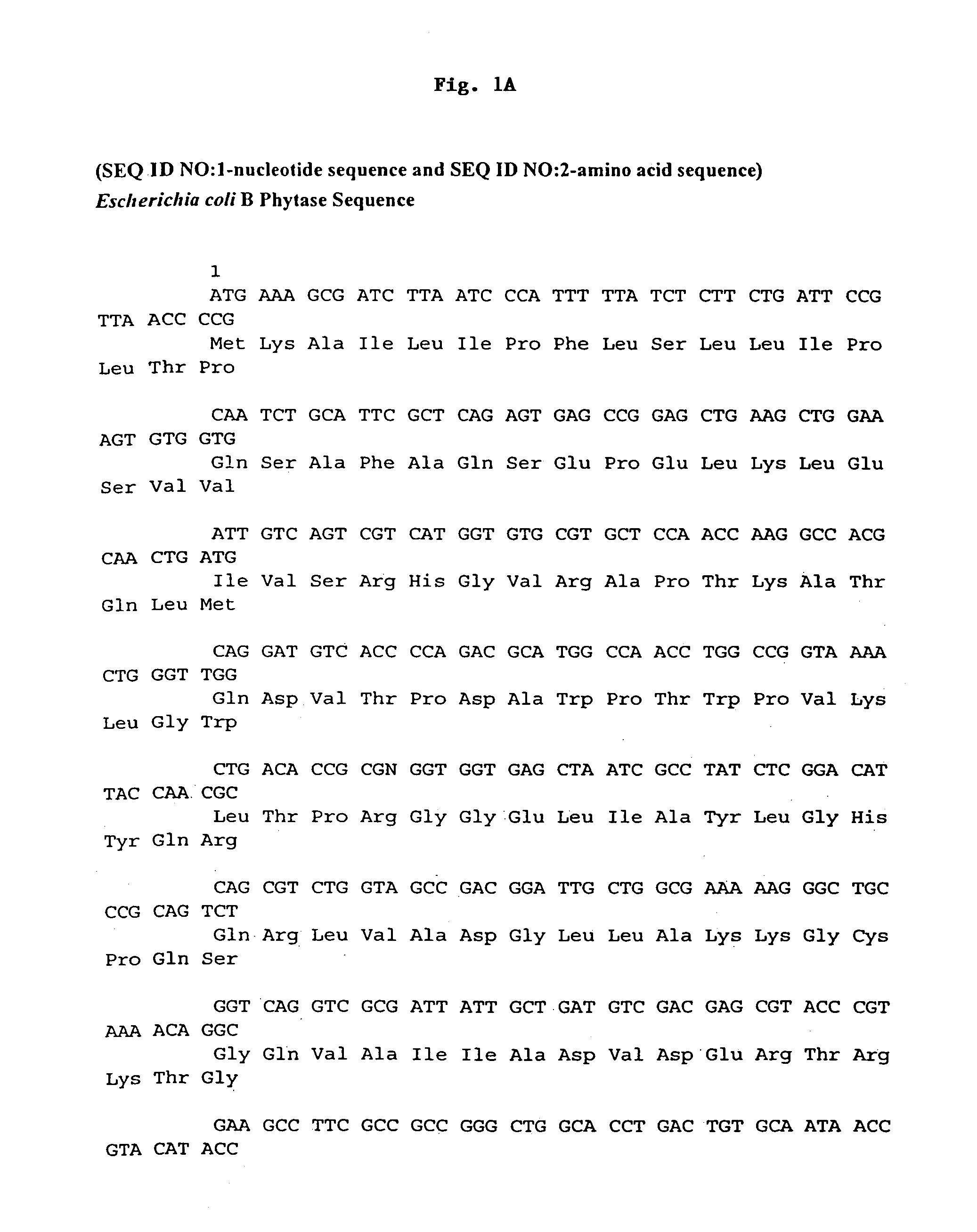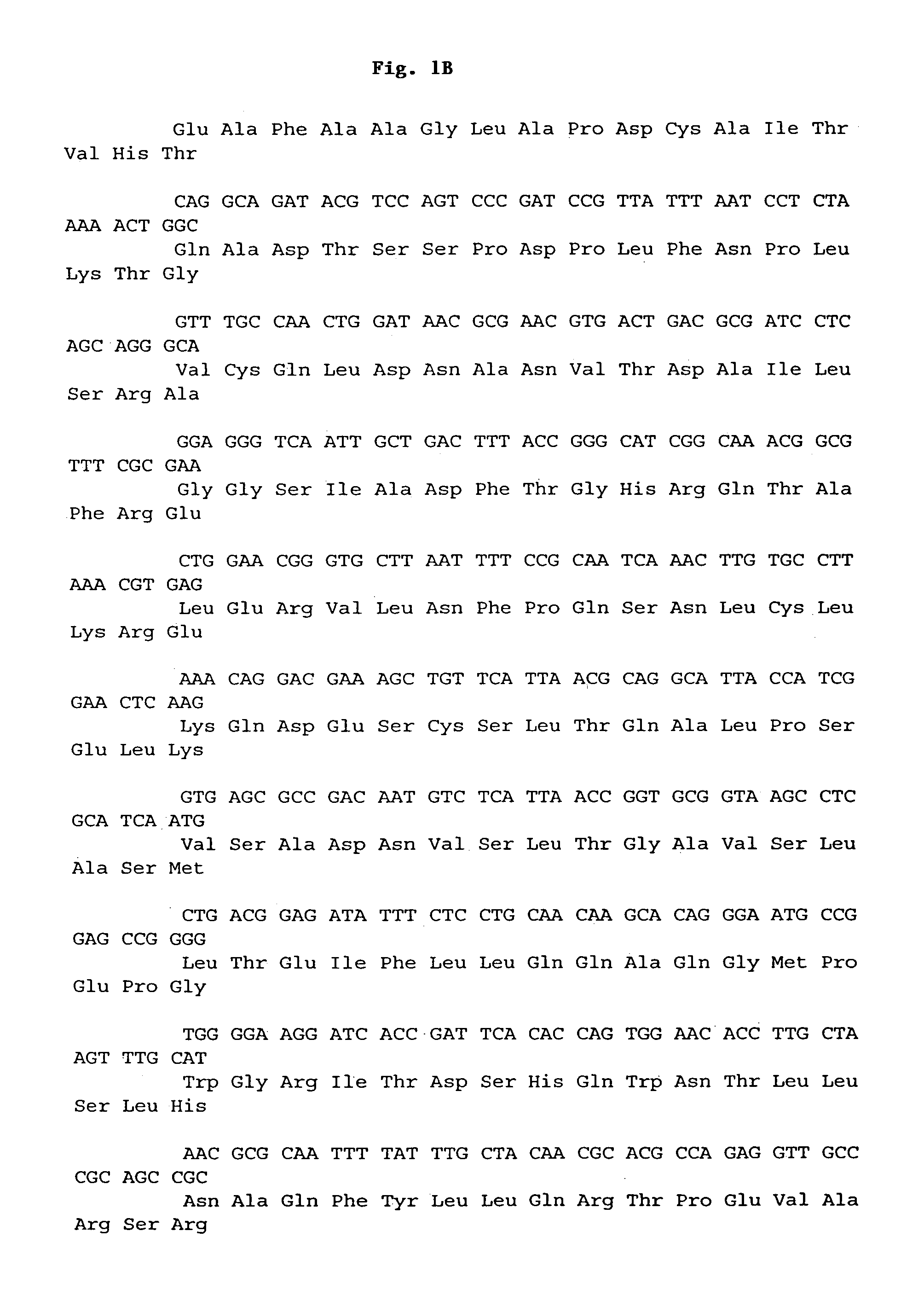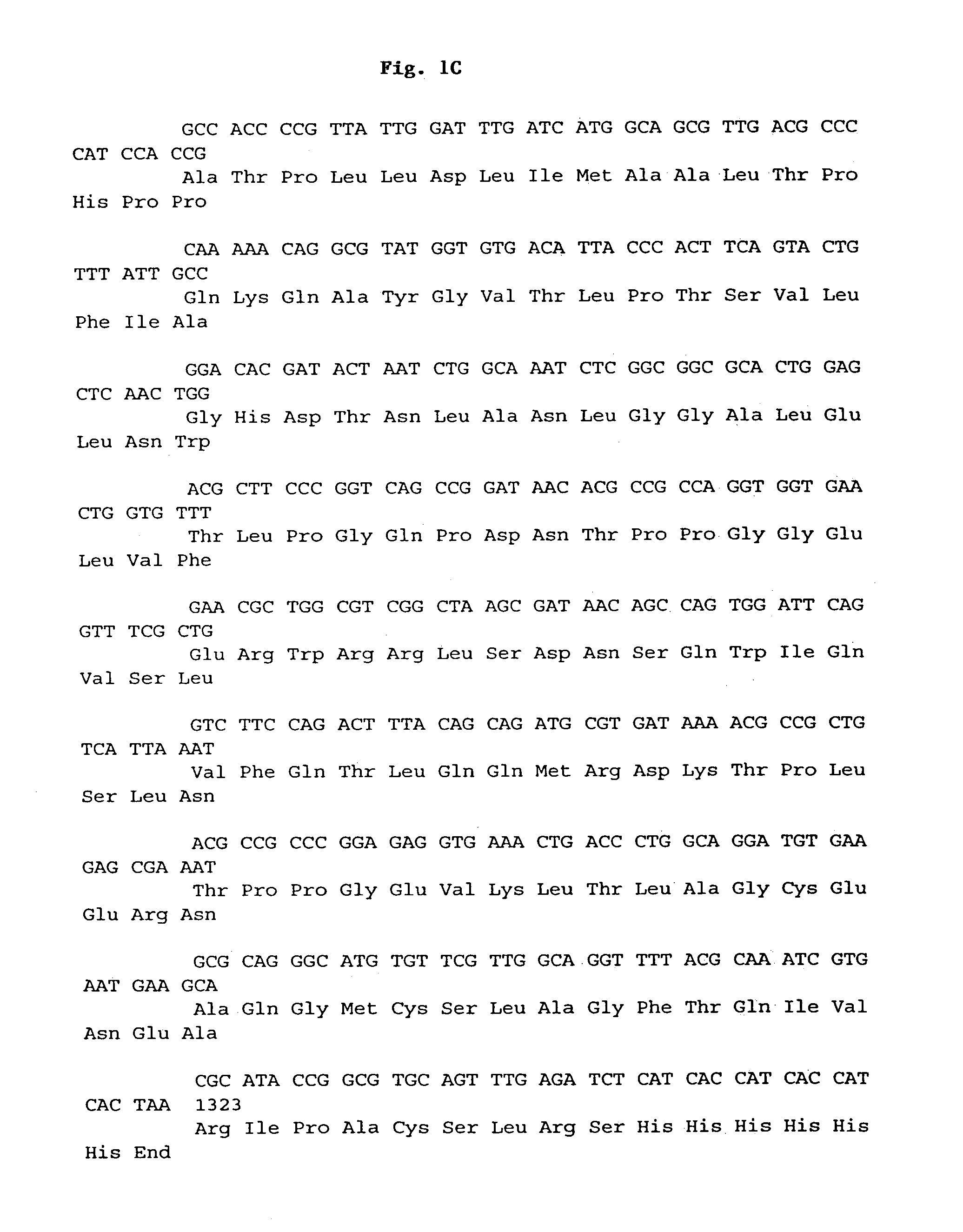The majority of species of farmed organisms, however, are unable to efficiently utilize phytate-associated minerals.
The following are non-limiting examples of these problems:1) The supplementation of diets with inorganic minerals is a costly expense.2) The presence of unhydrolyzed phytate is undesirable and problematic in many
ex vivo applications (e.g. by causing the presence of unwanted
sludge).3) The supplementation of diets with
antibiotics poses a medical
threat to humans and animals alike by increasing the abundance of antibiotic-tolerant pathogens.4) The
discharge of unabsorbed fecal minerals into the environment disrupts and damages the ecosystems of surrounding soils, fish farm waters, and surface waters at large.5) The valuable nutritional offerings of many potential foodstuffs remain significantly untapped and squandered.
However, the majority of species of farmed animals, including pigs, fish, chickens, turkeys, as well as other non-
ruminant organisms including man, are unable to efficiently liberate these nutrients after
ingestion.
2.1.3—
Ex vivo Processing Concerns: In yet another aspect, the presence of unhydrolized phytate leads to problematic consequences in
ex vivo processes including—but not limited to—the
processing of foodstuffs.
However, a significant negative effect associated with the overuse of
antibiotics is the danger of creating a repository of pathogenic antibiotic-resistant microbial strains.
Consequently, undesired tolerance consequences, such as those already seen with Avoparcin and
vancomycin, are likely to reoccur no matter what new
antibiotics are used as
blanket prophylactics for farmed animals.
2.1.5—Environmental Concerns: An environmental consequence is that the consumption of phytate-containing foodstuffs by any
organism species that is phytase-deficient—regardless of whether the foodstuffs are supplemented with minerals—leads to fecal
pollution resulting from the
excretion of unabsorbed minerals.
This
pollution has a negative
impact not only on the immediate
habitat but consequently also on the surrounding waters.
The environmental alterations occur primarily at the bottom of the
food chain, and therefore have the potential to permeate upwards and throughout an
ecosystem to effect permanent and catastrophic damage—particularly after years of continual
pollution.
This problem has the potential to manifest itself in any area where concentrated phytate
processing occurs—including
in vivo (e.g. by animals in areas of
livestock production, zoological grounds,
wildlife refuges, etc.) and
in vitro (e.g. in commercial corn
wet milling, cereal
steeping processes, etc.) processing steps.
When the
phosphate groups of
phytic acid are removed by the seed enzyme phytase, the ability to bind
metal ions is lost and the minerals become available to the
plant.
Inorganic phosphorous released in the colon has an appreciably diminished nutritional value to
livestock because inorganic phosphorous is absorbed mostly—if not virtually exclusively—in the
small intestine.
Thus, an appreciable amount of the nutritionally important dietary minerals in phytate is unavailable to
monogastric animals.
The cost-effectiveness of this approach has been a major limitation for this and other commercial applications.
Briefly, in processing
soybean meal using traditional
steeping methods, i.e., methods without the addition of exogenous phytase enzyme, the presence of unhydrolyzed phytate reportedly renders the
meal and wastes unsuitable for feeds used in rearing fish, poultry and other non-ruminants as well as calves fed on milk.
A combination of fungal phytase and a pH 2.5 optimum
acid phosphatase form A. niger has been used by Alko, Ltd as an
animal feed supplement in their
phytic acid degradative product Finas F and Finase S. However, the cost-effectiveness of this approach has remained a major limitation to more widespread use.
2.3.2—Optimization of
Enzyme Additives is Needed: to solve the problems disclosed, the treatment of foodstuffs with exogenous phytase enzymes has been proposed, but this approach was not been fully optimized, particularly with respect to feasibility and
cost efficiency.
It is appreciated that by attempting to improve factors that are not directly related to the activity of the expressed molecule proper, such as the expression level, only a finite—and potentially insufficient—level of optimization may be maximally achieved.
For example, the approach of generating and evaluating a full range of mutagenic permutations on randomly chosen molecular templates & / or on initial molecular templates having overly suboptimal properties is often a forbiddingly large task.
The use of such templates offers, at best, a circuitously suboptimal path and potentially provides very poor prospects of yielding sufficiently improved progeny molecules.
Additionally, it is appreciated that our current
body of knowledge is very limited with respect to the ability to rigorously predict beneficial modifications.
 Login to View More
Login to View More 


